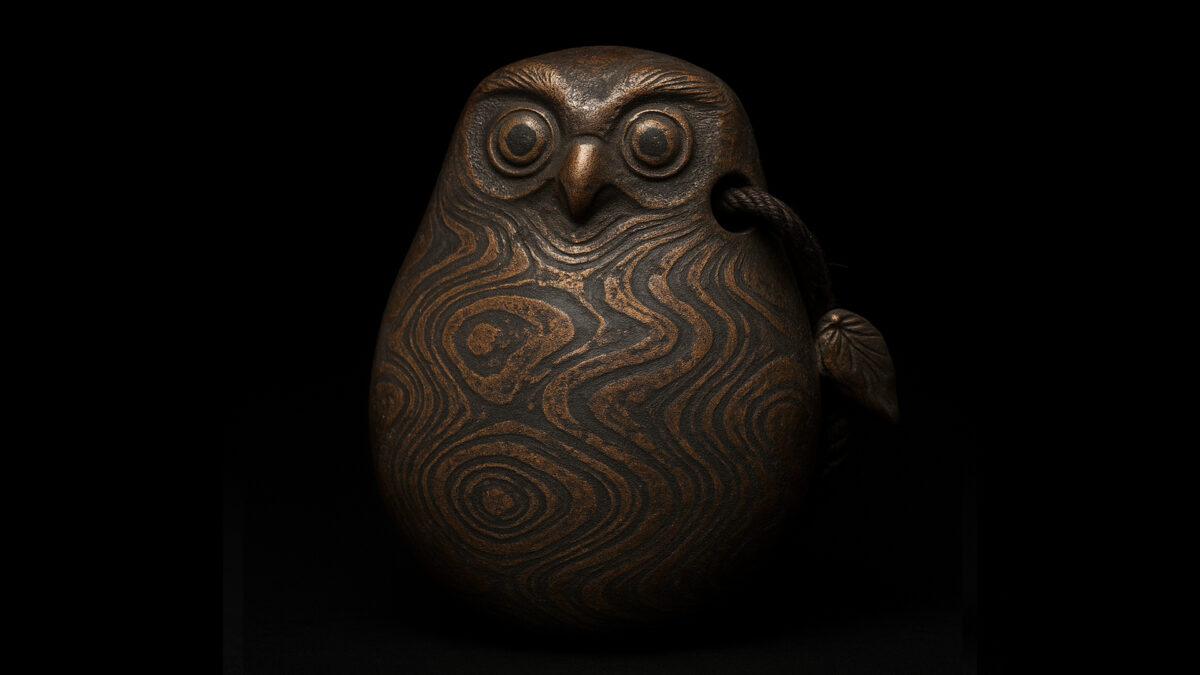- Mokume Gane’s Global Journey and Evolution Across Eras
- 1. Edo Period: A Secret Domestic Craft Passed Down in Seclusion
- 2. Meiji to Taishō Eras: From Weaponry to Decorative Art and Export
- 3. Rediscovery After Obscurity: Revival in Postwar America
- 4. Contemporary Period: Scientific Integration and Global Collaboration
- 5. Timeline Summary of Mokume Gane’s Global Exchange
- Conclusion
Mokume Gane’s Global Journey and Evolution Across Eras
Introduction
Mokume Gane, first conceived by Japanese sword fitting artisans in the 17th century Edo period, developed domestically for centuries. After being redefined as a decorative art following the Meiji-era Sword Abolishment Edict, it gradually spread to the West. Revived through re-education in postwar America and Europe, it has since evolved into a subject of study in materials science and international metal arts. This article traces the global transmission and transformation of Mokume Gane across three major historical axes: the Edo period (origins to isolation), Meiji to Taishō eras (modernization), and postwar to contemporary developments.
1. Edo Period: A Secret Domestic Craft Passed Down in Seclusion
1-1. Origins and Early Transmission
Mokume Gane was devised by Shoami Denbei (1651–1727), a master of sword fittings. He layered non-ferrous metals such as copper, shakudō, silver, and gold, then forged and carved them to reveal woodgrain-like patterns. While the technique spread among the warrior class under Japan’s isolationist policy, it was never transmitted abroad, and its processes were passed down strictly through oral transmission and within select artisan families. (Wikipedia, James Binnion Metal Arts, Steven Jacob)
2. Meiji to Taishō Eras: From Weaponry to Decorative Art and Export
2-1. From Martial Ornament to Fine Craft
The 1868 Sword Abolishment Edict ended samurai demand for sword fittings. Artisans adapted by applying Mokume Gane techniques to obi-dome, personal accessories, and tea utensils. Under the Meiji government’s export policy, Mokume Gane pieces circulated abroad. At events like the Paris and San Francisco Expositions, they were highly regarded and helped shape the trend of “Japanesque Silver.” However, exact records of which studios contributed remain unclear (uncertain).
2-2. Western Imitation and Theoretical Study
In 1866, American geologist Raphael Pumpelly introduced Mokume Gane in the American Journal of Science, describing it as a “damascened metal” layered with “gold, shakudō, silver, rose copper.” In England, Sir Alfred Gilbert applied Mokume Gane techniques to the central ornament of the Preston Mayor’s chain in 1888. Edward C. Moore of Tiffany & Co. produced 24-layered silver vessels inspired by Japan and won honors at the Paris Exposition. However, these were typically solder-bonded rather than solid-state diffusion bonded, unlike traditional Japanese methods.
3. Rediscovery After Obscurity: Revival in Postwar America
3-1. Education and Demonstration at SIUC
In the 1960s–70s, Hiroko and Eugene Pijanowski, exposed to a demonstration by Norio Tamagawa at Southern Illinois University at Carbondale (SIUC), reintroduced Mokume Gane to the U.S. The 1977 SIUC workshop influenced many artisans and advanced the refinement of solid-state diffusion bonding methods.
3-2. Systematization of Contemporary Mokume Gane in the U.S.
From 1991 onward, James Binnion (founder of JBMA) systematized Mokume Gane using vacuum diffusion bonding and polishing, establishing a method using electric kilns and charcoal-based diffusion ovens. His presentation alongside Chris Ploof at the 2016 Santa Fe Symposium was a landmark demonstration of scientific approaches to Mokume Gane. (James Binnion Metal Arts, santafesymposium.org)
4. Contemporary Period: Scientific Integration and Global Collaboration
4-1. Materials Development and Scientific Approaches
Steve Midgett helped reframe Mokume Gane through a scientific lens, bringing the technique into materials engineering. Chris Ploof and others have explored the use of friction stir welding (FSW) and CNC machinery to replicate Mokume patterns using modern fabrication technologies.
4-2. International Collaboration and Exhibition Today
International collaborations among manufacturers and craftspeople have expanded. In the U.K., Germany, and Scandinavia, many contemporary metal artists have adopted Mokume Gane. For example, Cóilín Ó Dubhghaill in the U.K. has re-evaluated its material history from a cultural standpoint, while some German institutions are beginning R&D into alloys and fabrication strategies related to ashoku materials (some claims speculative).
5. Timeline Summary of Mokume Gane’s Global Exchange
| Era | Primary Developments |
|---|---|
| Edo Period | Domestic development, transmitted among sword fitting artisans; no overseas dissemination |
| Meiji–Taishō | Post-Sword Abolishment transition to decorative goods; exhibition exports; emergence of solder-based Western imitations |
| Postwar–1970s | Reintroduction via Pijanowski couple; SIUC workshops; educational expansion |
| 1990s onward | James Binnion’s technical systematization; electric kiln diffusion methods |
| 21st Century | Fusion with materials science, engineering; expansion in academic and industrial domains |
| Future | Prospects include collaborative alloy development, digital fabrication, and international education (partially uncertain) |
Conclusion
From its origin as a samurai-era craft in 17th-century Japan, Mokume Gane has traveled a long path:
- Meiji Era: Adapted as a decorative export art
- Postwar Period: Reintroduced to the U.S. via academic and craft education
- Modern Day: A nexus of traditional skill, scientific research, and global design
Ongoing collaborations in materials innovation, technique enhancement, and international education suggest that Mokume Gane will continue to evolve—poised to flourish as both a fine art and industrial material across global contexts.
Note: Sources include James Binnion Metal Arts (technical history), Steven Jacob (Western imitation & Pijanowski era), Santa Fe Symposium archives, Pumpelly’s early report, SIUC workshop materials, and Wikipedia. Unverified content is marked “uncertain” where appropriate.
References
(As previously listed in Japanese)

